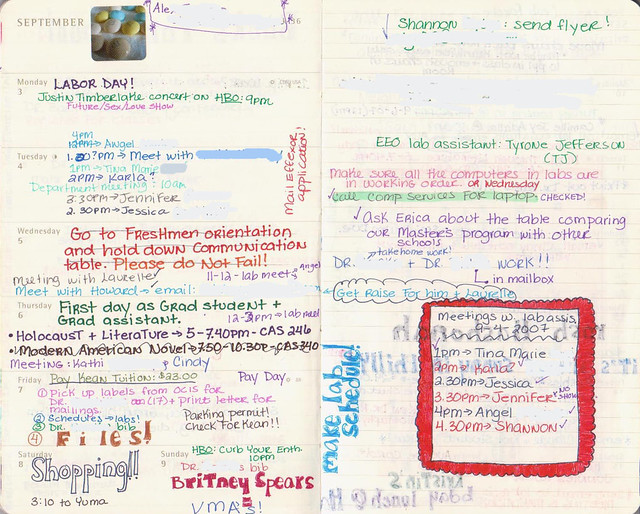A few suggested caveats,
1) Don't confuse your planner with a journal, as you'll see done in this hourly planner:
2) Don't confuse your planner with a diary, as you'll see done here:
3) Don't confuse your planner with a creative log like this:
4) Do feel free to use a pencil and a ruler to format the pages however you please--as this creative planner did:

The MacRath Solution:
There were three areas I needed to track in a 240-page notebook that had to last me a year.
1) Acts/Appointments
2) Physical: Gym/Additional home exercise/Nutrition
3) Writing: to-do's including composition, networking, reading, reviewing, blogging, etc.
I also hoped to add a few lines per day for two motivational notes: an intention that I visualized as being achieved...and a perception, or lightbulb, for the day.
Strategies
1) I divided each notebook page into halves, horizontally--giving me two days per page, each page consisting of 11 lines.
2) Thus, I worked in four-page batches with a full half-page left after the 7th day. I would use this free half-page to list the things I needed to accomplish in the week.
3) Between the 11-line days, I allowed two lines apiece for notes on Intention and Perception.
4) The master stroke, for me, was dividing the 11-line days into three equal vertical columns, one for each of my chosen areas.
I have enough pages left over at the back end for important addresses and notes. Plus, there's a Moleskine-style pouch on the inside of the back cover.
After decades of trying one planner after another, I've become a happy camper. And you can be one too if you stop forcing your style to fit someone else's format.

No comments:
Post a Comment
Your comments are welcome. Just keep them civil, please.